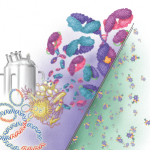According to CMS’ Medicare Drug Spending Dashboard report for 2014, the annual change in average cost per unit from the prior year for adalimumab was 15%, etanercept 16% and infliximab 5%.
To slow these upward trends and encourage the availability of more cost-effective treatments, Congress passed the Biologics Price Competition and Innovation Act, part of the Affordable Care Act (ACA), in 2009. This created a new, possibly faster approval pathway for products that are biosimilar to or interchangeable with an FDA-licensed reference product.
“The FDA is committed to encouraging the development of these biosimilar and interchangeable products,” said Leah Christi, PhD, the FDA’s associate director for therapeutic biologics.
Biosimilars may have a shorter, less costly path to approval because their sponsors can rely on existing scientific knowledge of the reference biologic to support safety and efficacy, she said. This quicker route to market “is one way to improve access and increase treatment options for the public and potentially lower cost.”
Despite being able to rely on existing data, the FDA will apply the same high standards for approving biosimilars, said Dr. Christi. This includes a totality-of-the-evidence approach, considering all available data, including analytical, animal, human pharmacokinetics, human pharmacodynamics when applicable, clinical immunogenicity, and clinical safety and effectiveness.
What the 2009 law requires is that sponsors demonstrate that these products are “highly similar to the reference product, notwithstanding minor differences in clinically inactive components,” and that “there are no clinically meaningful differences between the biological product and the reference product in terms of safety, purity and potency of the product,” said Dr. Christi.
What about extrapolation of data so a biosimilar can be approved for the same indications as its reference product? That’s one unknown that concerns some rheumatologists, said Dr. White. The ACR is closely engaged with the FDA to ensure that “clinical data from one population of patients are not extrapolated to another patient population, thus allowing FDA approval in an untested population without great caution,” he said.
Although the FDA’s biosimilar pathway allows for clinical data to be extrapolated to additional indications, applicants will still need to provide adequate scientific justification for doing so, said Dr. Christi.
To give prescribers accessible information about these new drugs’ designations and indications, the FDA has published an online reference, The Purple Book, which lists licensed biologics with reference product exclusivity, and under these, the biosimilars and interchangeables for them.
Control & Tracking
Clear communication and naming of these drugs will help rheumatologists and others track efficacy, said Dr. Daikh.



